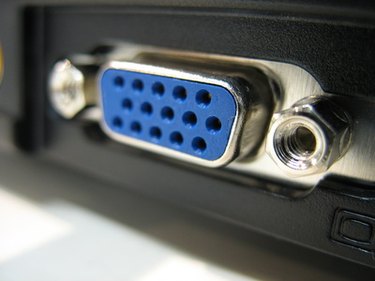
VGA cables use a 15-pin D-sub connector and carry analog video signals for red, green, and blue color channels (RGB). Component RCA carries signals for YPbPr, which is converted from RGB and split into three channels. The Y channel carries brightness levels (luma) and sync signals, the difference between blue and luma is used for the Pb channel, and Pr carries the difference between red and luma. Since display devices are sometimes capable of sending and receiving a YPbPr signal over VGA, an RCA-to-VGA adapter can be built to take advantage of these scenarios.
RCA to VGA over Ethernet cable
Video of the Day
With four twisted pairs of color-coded wire, Ethernet cable can be used to bridge RCA phono plugs and VGA pins. An adapter can be built with either male or female connectors and can extend as long as 50 feet. The orange (Pr), green (Y) and blue (Pb) twisted pairs each carry a component video channel and are connected to RCA plugs on one end of the Ethernet cable. On the adapter's other end, the pairs are soldered to the VGA connector's pins for red, green, and blue color channels.
Video of the Day
Pinouts

The VGA connector has 15 pins arranged in three rows. The first pin is used for red color channels in RGB, and should be connected to the solid orange wire. The second pin is attached to the green wire, and the third is used for blue. Pins 6, 7, and 8 act as each color channel's ground and should be connected to the orange, green and blue striped color wires, respectively.